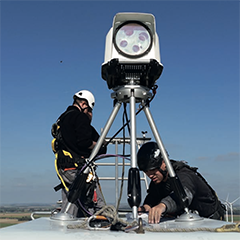As global interest in wind energy continues to grow, an increasing number of projects are looking out to sea, where the vast ocean expanse allows offshore wind farms to cover more area, erect larger turbines and generate more energy.
Offshore wind is expected to constitute 20% of total wind energy installations by 2025. While Europe and Asia are leading the way, the United States is making its own waves in the offshore wind market, with developers planning to implement about nine gigawatts of offshore wind by 2026.
Although offshore wind farms can produce more energy and don’t have to deal with the terrain issues and residential opposition some land-based farms face, operating on the open ocean presents its own unique set of challenges.
The traditional measurement towers used to gauge winds for inland farms are difficult, if not impossible, to install and maintain at offshore sites due to the harsher conditions and remote locations. They also may be less accurate for the much larger turbines used at sea, making getting reliable wind characteristic assessments one of the biggest challenges to maximizing the potential of offshore wind farms. And considering offshore wind farms can cost
10 times as much as their onshore counterparts, getting the most out of
the turbines is key.
Enter lidar technology. Light detection and ranging equipment use pulsed laser light to remotely measure characteristics of the wind flow and data such as wind speed, wind direction, and turbulence. All of this in real time and using technology that is more versatile and adaptable to the various phases and needs of an offshore wind farm.
Let’s dig a little deeper.



























